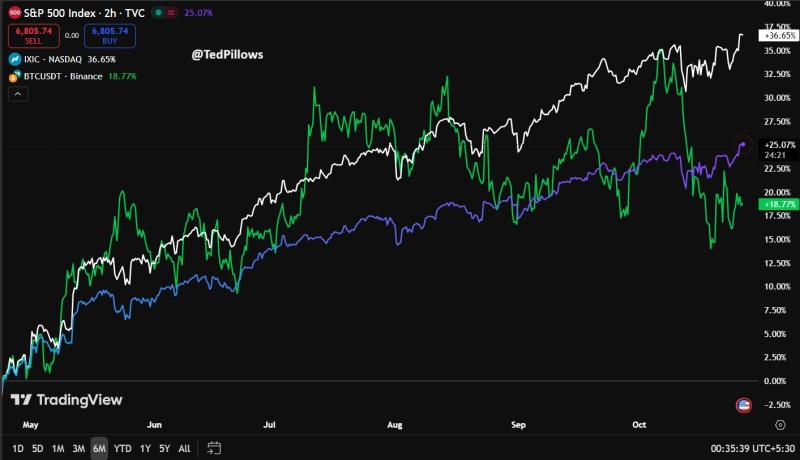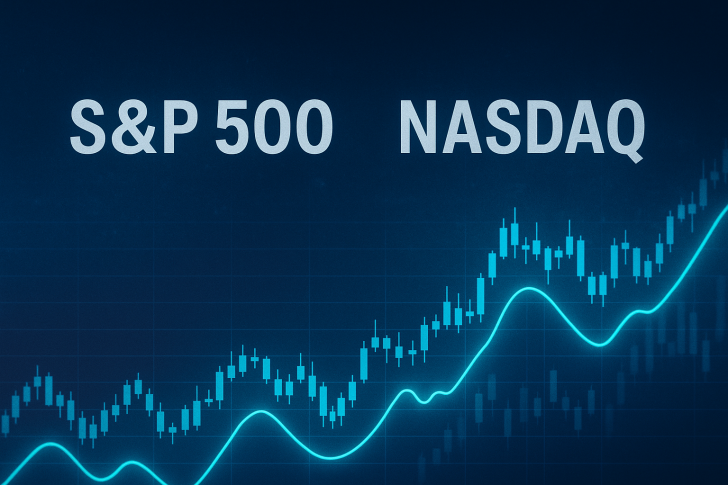Something unusual is happening in 2025: U.S. stock markets are outperforming Bitcoin while being far less volatile. Traditional markets, typically seen as the safe and steady choice, are now delivering better returns than Bitcoin—which usually dominates during bull runs.
The Numbers Tell the Story
As highlighted by Ted, the S&P 500 and NASDAQ have both surged past the world's largest cryptocurrency since April, suggesting a shift in how institutional money is moving. The performance gap is striking. Since April, the NASDAQ has jumped 36.65%, the S&P 500 is up 25.07%, and Bitcoin has gained 18.77%. While Bitcoin remains more volatile, its returns have flattened out since midyear, unable to keep pace with equities. The NASDAQ, powered by tech and AI stocks, leads the pack, followed by the S&P 500's broad market strength. Bitcoin's chart shows multiple sharp drops and slower recoveries—classic signs of consolidation around key price levels.

The AI boom is the main driver behind stock market gains. Companies like NVIDIA, Microsoft, and Apple are posting strong earnings fueled by AI infrastructure spending, which has propelled the NASDAQ's 36% surge. At the same time, a stabilizing U.S. economy has helped. With the Federal Reserve holding steady and inflation cooling, conditions favor growth stocks over speculative assets like crypto. Bitcoin itself is in consolidation mode after a massive first-quarter rally, trading in a narrower range as institutional traders wait for clearer signals. Meanwhile, the initial excitement around Bitcoin spot ETFs has faded—inflows have slowed and attention has shifted back to earnings-driven stocks.
Is Institutional Interest Fading?
This raises an important question: will Bitcoin's underperformance reduce institutional demand? Many institutions that initially chased crypto for high returns are now rotating back to equities, where they can get competitive gains with less risk. But long-term crypto advocates see this as just a mid-cycle pause. Bitcoin often lags during equity rallies but historically bounces back when liquidity increases or markets turn risk-off again.
What's interesting is that Bitcoin increasingly moves in sync with the NASDAQ and S&P 500, just with bigger swings. This growing correlation suggests Bitcoin is acting more like a tech-linked risk asset than an independent inflation hedge. The line between crypto and traditional assets is blurring—Bitcoin's short-term value remains tied to global liquidity and investor risk appetite.
 Usman Salis
Usman Salis

 Usman Salis
Usman Salis


